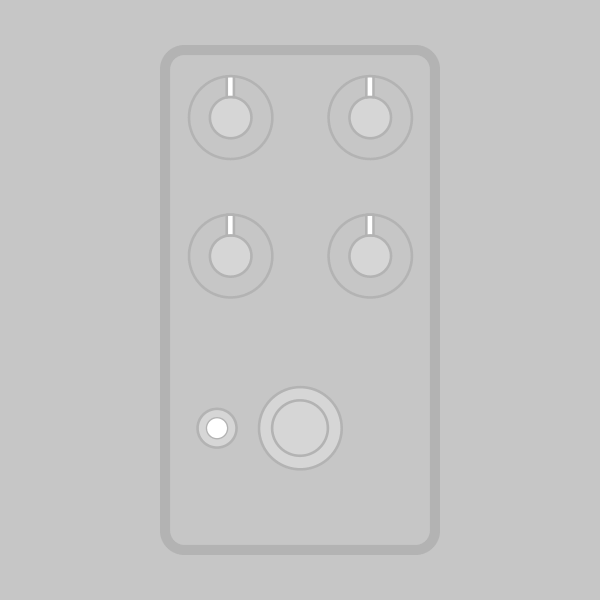
The Oberon Vintage Distortion is based on the original Jordan Boss Tone Model 1000, originally designed in 1966 by a company who was better known for making medical equipment and consumer Geiger counters for a post-WW2 atomic world.
The Boss Tone (also stylized as Bosstone) was one of the first fuzz or distortion units to use diode clipping. The Astrotone Fuzz predates it, but not by much. The Astrotone was released in 1966, and the Boss Tone was shown at the NAMM show in July 1966, but does not appear to have been commercially available until early 1967.
The two circuits are somewhat similar. The biggest difference is in form: the Jordan is meant to be plugged directly into the guitar, like the Vox Distortion Booster or Dan Armstrong effects, while the Astrotone is a floor pedal. These plug-in boxes were trendy for awhile in the late 1960s, but since they were incompatible with the Stratocaster and other recessed-jack guitars, this format of effect unit had largely disappeared by the early 1970s.
Inside the boxes, the Jordan has two cascaded transistor gain stages before the diode clipping while the Astrotone only has one. The Astrotone has a tone control, though not a terribly effective one in the stock configuration, and the second transistor only serves as a buffer to isolate the clipping diodes from the tone control. Both circuits control gain the same way, with an input potentiometer that is functionally the same as a guitar volume knob.
The Boss Tone was released in five different versions. The first three use two NPN transistors and are called the “California” versions since Jordan Electronics was based in California. The last two use one NPN transistor and one PNP, and are called the “Nashville” versions since Jordan licensed production of the circuit to the Sho-Bud company in Nashville. Each of the five versions sounds different, but the California-Nashville transition between V3 and V4 was the most drastic change.
The Oberon is directly based on the original California versions of the Boss Tone, with the NPN-NPN version of the circuit. We have added a toggle switch that selects between two sets of clipping diodes or disables them altogether, but otherwise, it’s a faithful reproduction of the original circuit.